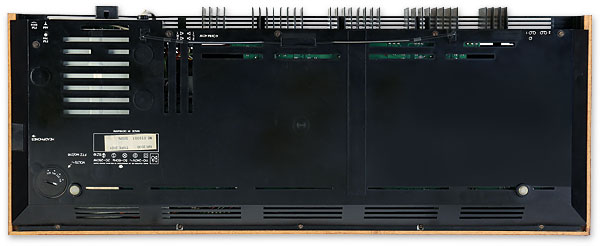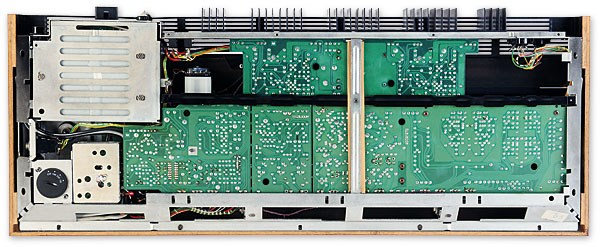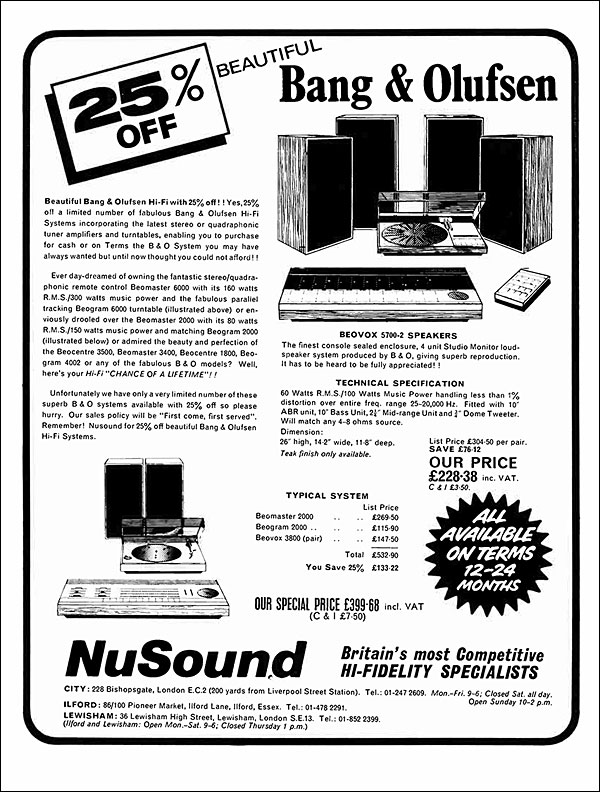B&O Beomaster 2000 Page 2
![]() Tim Listens
Tim Listens
Even after the briefest of listens it's clear that B&O's designers must have celebrated a welcome return to form with the Beomaster 2000.
The receiver still has the familiar luxurious B&O sound but this does not stop it being a lively and vivid performer. It improves noticeably on the Beomaster 3000 and completely trounces the 4000, despite being a third less powerful. The technology employed, which was focused on appealing to the ears of the audiophile, had done the trick – this particular model is a real hidden gem.


Perhaps the 2000's most attractive quality is the way it can play softly for late-night listening and render detail perfectly but also produce effortless amounts of power for a genuine concert hall experience when required. It lacks the clipping indicator of the Beomaster 4400 receiver [HFN Jun '12] so it is up to the listener to judge when the power margin is all used up. But things do not begin to sound rough until the control is almost at the top of the scale and the music is deafeningly loud. Unless your listening room is very large this receiver has more than enough power to cover most tastes. Noise performance is fair too, there being some hiss to be heard when the control is pushed beyond about '7' on the scale, but at normal volume levels the background is as good as silent.
Time To Unwind
Sade's album Diamond Life [Epic CDEPC 26044] satisfied with its creamy saxophone and rich, chewy bass lines when played through the 2000. I did get the impression that the uppermost treble was slightly muted, though, as the snares and percussion didn't sparkle and shimmer in quite the way I know they can.

However, the effect was less obvious when listening to BBC R3 via the receiver's built-in FM tuner section (90.3MHz) and so I can only suspect that the very top end is going astray in the preamp section. Nevertheless, the roll-off is slight enough to be cancelled by selecting a brighter-sounding source. In my case, swapping a Philips CD104 [HFN Apr '14] for a Technics SL-P1200 [HFN Aug '13] did the trick.
Where the 2000 really scored was when it came to its midrange balance and neutrality. Vocals were perfectly placed in the mix, being neither prominent nor recessed. This made for an instantly attractive sound, and one that proved very easy to relax into. This may seem an obvious requirement, but there are many amps out there that are less compelling.
Keep Your Distance
On a larger scale, the slim Beomaster 2000 proved easily capable of preserving both the space and drama of full-scale orchestral pieces. Mozart's 'Serenata Notturna' played by the Berliner Philharmoniker, conducted by Herbert Von Karajan [Albinoni: Adagio/Pachelbel: Canon; Deutsche Grammophon 413 309-2], showed how a carefully designed amplifier can preserve the impression of distance between the performers if the source component is up to the task of recovering it. Stereo soundstaging was also excellent, as was the rendering of fine textural detail around the strings.

Singular Appeal
After many more hours of listening I found myself concluding that despite being nearly 50 years old, the Beomaster 2000 has the sort of sound that makes it appropriate for use in a main system. It may lack the final perfection of the Beomaster 4400 [HFN Dec '12] and doesn't feel quite as special to own as the Beolab 5000 (although it is less coloured sounding when compared directly), but it has no obvious sonic vices. It also saw Bang & Olufsen escape the doldrums as far as the sound quality of its larger models was concerned.
When the 2000 was replaced by the Beomaster 2200 in late 1977 many of its novel ideas were lost, in particular the decision to avoid the use of aluminium electroltyic capacitors. This makes the 2000 a unique proposition, and one well worth seeking out to hear.
Buying Secondhand
Since the Beomaster 2000 did not sell in the same quantities as the 3000 and 3000-2, good examples can be difficult to find. They are certainly sturdy units but are not without their problems. The cover over the pre-set tuning controls slides off and is easily lost, spoiling the sleek appearance. The tuning drive for the flywheel disc can also fail when the plastic inside that holds the pulleys for the cord drive disintegrates. Repairs are possible but they're not straightforward.

Meanwhile, the circuit for the red and green indicator lamps by the disc is unusually complex. This requires all the lamps (and the one inside the tuning pointer) not only to be intact but to be of exactly the right rating if it's to work at all.
Electronically speaking, it is the FM radio that seems to suffer most problems. The FM discriminator and tuning balance indicator have to be set up correctly for the AFC system and the stereo decoder to work, and they seem to drift over time. Accurate instruments are necessary to bring them back into line. The amplifier sections have proved to be reliable, but it's vital all the fuses are of the correct type and rating.
Hi-Fi News Verdict
The Beomaster 2000 may not be one of B&O's most memorable designs but in performance terms it certainly ranks as one of the company's best. If you are keen to avoid the hard and brittle sound of some amplifiers released around this period then the smooth-sounding 2000 is well worth considering. The top quality radio section is a bonus, which makes this slick-looking receiver even more compelling.


















































